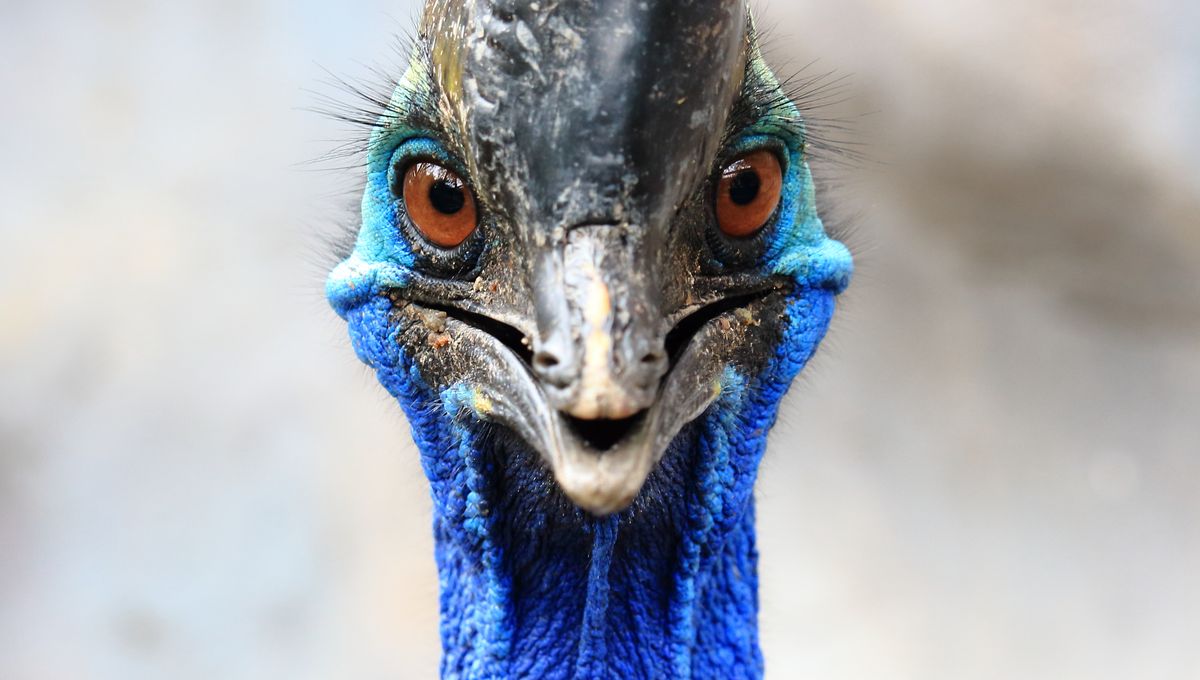
With razor-sharp claws, a neon blue neck, and a tall, brown helmet, Southern cassowaries are quite the sight to behold – but also an increasingly rare one, as these notoriously grumpy birds are at risk of extinction.
Southern cassowaries are generally considered to be the world’s most dangerous bird, at least in terms of their threat to humans. That being said, if you stay far enough away from them, these flightless birds are likely to stay away from you. Get too close, however, and you’ll soon find out that a cassowary provoked is not one you want to be anywhere near; one even killed a man back in 2019.
But as is often the case, humans have ended up being a bigger threat to them than the other way around. In their native home of Australia, they’ve been subject to loss and fragmentation of their habitat, attacks from dogs, and the number one cause of adult cassowary death, vehicle strikes.
As a result, it’s estimated that only around 4,000 adult cassowaries remain in the wild, with numbers still declining. They’re now considered to be an endangered species by the Australian government, along with another 143 new species added to the Australian threatened species list in a “2023 wrapped” report.
The potential loss of any species can have a knock-on impact on its ecosystem, but its effects could be felt particularly keenly in the rainforest habitat that the cassowaries inhabit. There, they’re the chief gardeners for maintaining diversity – they’re the only species that can gobble down and redistribute the seeds of more than 70 tree species with seeds too large for others to eat.
“They walk around for a few kilometres, do a major poo and out comes a seed, with the flesh off it,” described Jax Bergersen from the Cassowary Recovery Team, speaking to ABC News.
“You won’t notice it [the seeds not being dispersed] within a lifetime, but it will be noticeable over a couple of hundreds of years when we no longer have those trees with large fruit.”
To ensure the rainforests of the future are bursting with seed-packed cassowary poop, the Australian government last year created an updated national recovery plan for the species, working with Indigenous and conservation groups.
The plan’s recommendations include buying back land to create wildlife corridors, more effective road signage to warn drivers of cassowary habitat, and increased education for dog owners to prevent attacks.
There are some doubts as to how successful the plan will be. “All of that will require money. They can’t buy back land someone doesn’t want to sell,” said Bergersen.
But it’s hoped to be, at the very least, a step in the right direction to conserving this outwardly grumpy and intimidating, but ultimately charismatic and important species – just don’t try to get up close and personal with them.
Source Link: The World’s Most Dangerous – And Cranky – Bird Is Now Threatened With Extinction